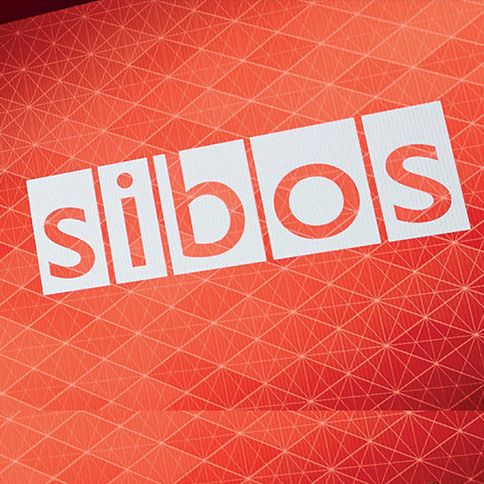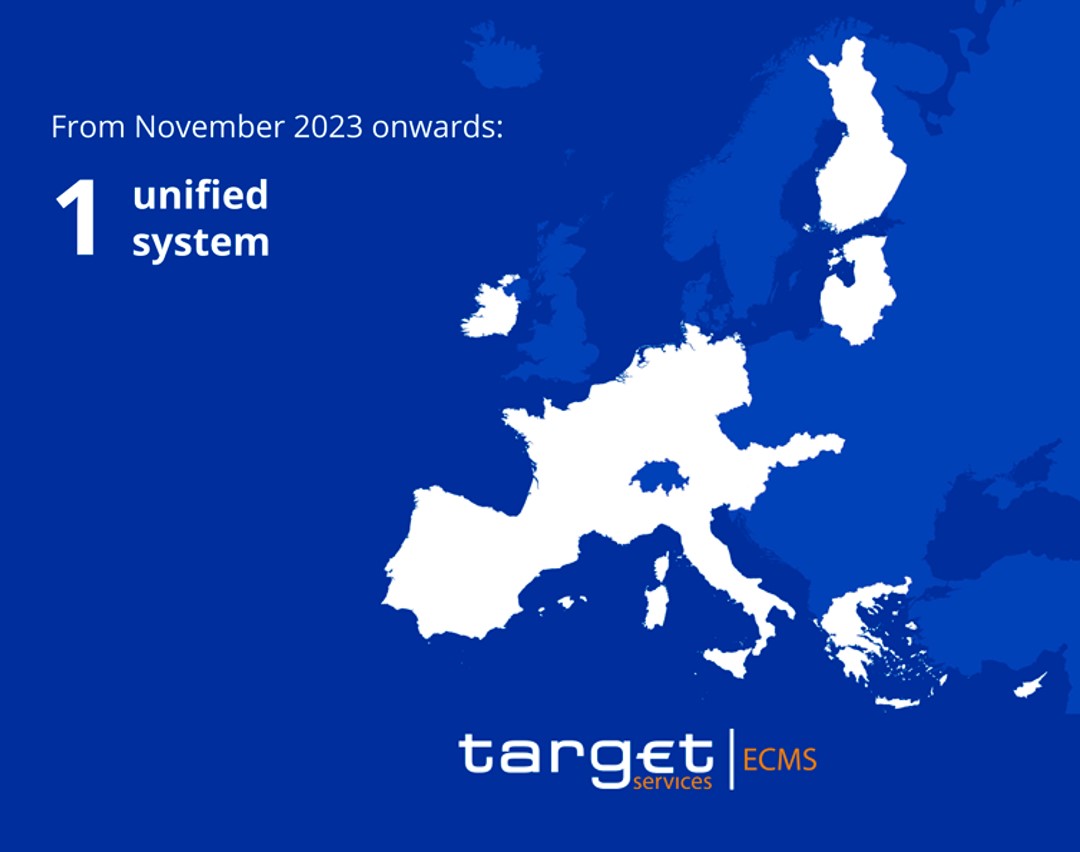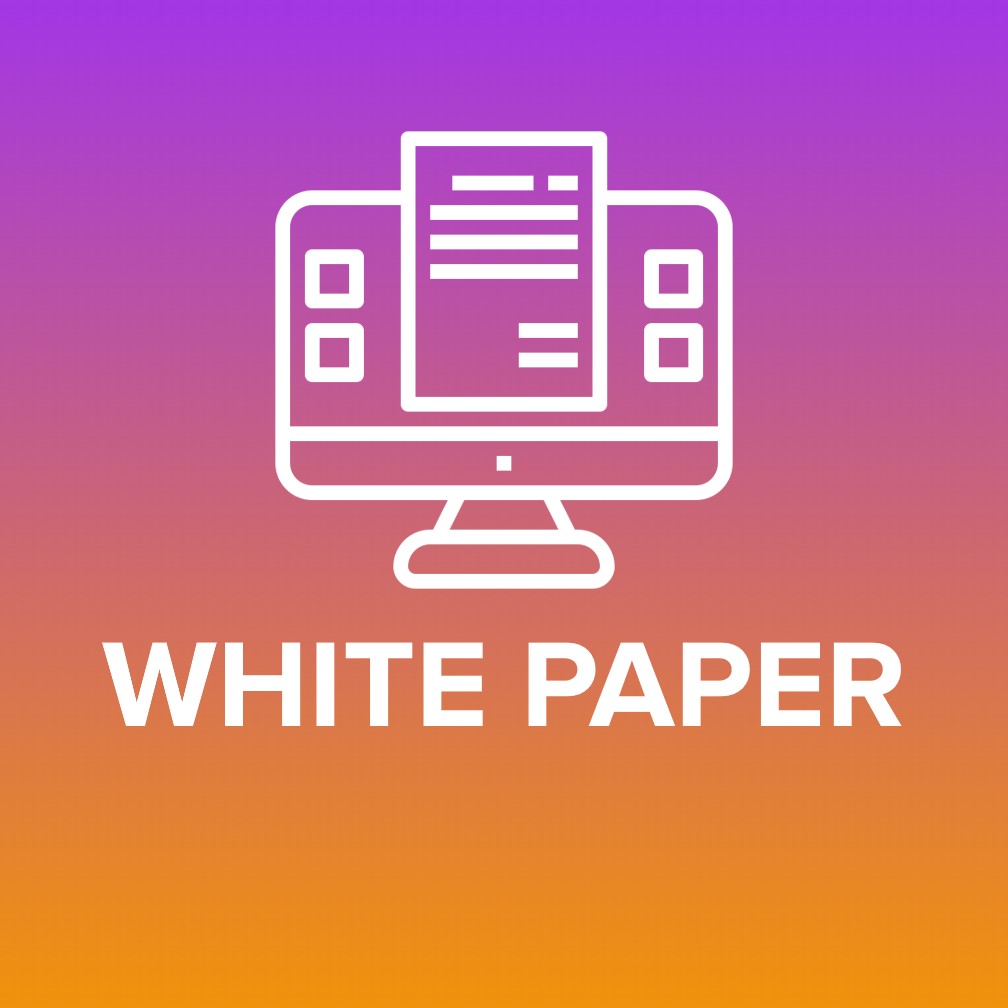Financial Networks Connectivity
Accessing interbank networks and domestic, international or proprietary payment infrastructures while efficiently managing financial messaging are critical activities for all Payment service providers (PSP). Our technology simplifies and optimises access by decoupling network complexity from collection and payment business processes. We allow you to maximise scalability with solutions that comply with ACH, RTGS and Bank to Corporate schemes, enabling the centralised management of all transactions across different channels and different network service providers.
Talk to our experts
Contact usConnectivity and business services for data interchanges without borders
Thanks to the modular architecture of our platform, flexible and integrated network connections are now easier, safer and more cost-effective.
A hub of services dedicated to financial transactions interchanges fit for both traditional and emerging market challenges
Complete freedom in the choice of CSMs and NSPs
Connecting customers to national or international interbank networks in a simple transparent way
Available onpremises for in-house installations, as managed service (SaaS), or in the Cloud.

Elastic and modular, enabling easy extensions to meet new business needs
Based on micro services technology to grow with your business
Vendor agnostic, multi-country, multi-standard and multi-protocol
Embedded Business services managing business lines out-of-the-box, enabling both simple and complex payment workflows
Sanctions screening and anti-fraud orchestration functionalities can be integrated inside workflows
One platform for all ISO 20022 migration needs
Offers a rich library for legacy standard syntax transformations
SWIFT SERVICE BUREAU – Certified outsourcing
Using SWIFTNet for financial communications enables banks and corporates to reach thousands of financial institutions worldwide. TAS Service Bureau complies with the Standard Operating Practice level as defined in the SWIFT Shared Infrastructure Programme. It is a certified, complete, straight through processing solution providing a secure single channel for inter-bank and corporate-to-bank connectivity. Outsourcing the connectivity to TAS costs significantly less than managing in-house SWIFTNet access.
Moreover, our Service Bureau offers you a full range of value-added services that can be activated at customer request.
A growing suite of connectors and business drivers
SWIFTNet drivers
FIN, FINPlus, FileAct, Interact and Instant
SIAnet drivers
from the legacy RNI messaging service to the modern European Instant protocols
SEPA drivers
SEPA SCT/SDD, RT1, etc.
FIN <--> ISO20022 mapper
for CBPR+ and ESMIG
SWIFT SCORE
Bank to Corporate connectivity
High Value Payment Circuits
in Europe and UK
SWIFTNet drivers
From the historic FIN and FileAct protocols for exchanging any MT messages and files, to InterAct and the latest FINPlus and Instant services, our Service Bureau offers the full range of protocols supported by the SWIFTNet. And with to our format-to-format transformation services, opening new business has never been easier.
SIAnet drivers
Thanks to the long collaboration between TAS and SIA, we support all communication protocols needed to access the SIA and SIACOLT networks, from the legacy Italian protocols for exchanging messages and files to new pan-European protocols to access the SEPA and SEPA instant payments circuits. And with the support of our decoupling technology, the transitioning of business services between networks to another becomes very simple.
SEPA drivers
TAS’s financial messaging suite supports all EBA Clearing Retail Payments protocols. EURO1/Step1, Step2 and RT1 schemes are managed by dedicated drivers, allowing format conversions and enrichments.
FIN <--> ISO20022 mapper
ISO 20022 is a rich, structured and extensible messaging standard; increasingly it is becoming the de facto standard for exchange of payments and cash reporting in high value, instant and other domestic and cross border payment schemes. FIN/MT payments and cash reporting messages will start to migrate to the ISO 20022 syntax in November 2022, followed by a three-year coexistence period with legacy SWIFT MT standards ending November 2025. Leveraging the advice of TAS certified experts and adopting our CBPR+ ready components, can save you time and migration costs, letting you simply focus on your business.
SWIFT SCORE
“SCORE” – Standardized Corporate Environment, was defined to enable corporates to use SWIFT’s single, secure, and reliable messaging platform to access cash management services provided by their financial institutions. Our financial messaging suite includes a module for streamlining the Bank-to-Corporate interconnection based on Score rules for participants.
High Value Payment Circuits
Real Time Gross Settlement Systems protocols are supported by TAS’s financial messaging suite through dedicated drivers, covering the ECB’s new ESMIG A2A and U2A protocols, TARGET2Securities and TIPS. In addition, we support the exchange of financial transactions with CHAPS, one of the largest high-value payment systems in the world, providing efficient, risk-free settlement and irrevocable payments.

Compliance and certifications
- SWIFT Certified Interfaces
- SIA SmartIntegrator Application Certification
- SWIFT CBPR+ readiness
Success Stories
Some of our clients
UniCredit
Banco Central de Cuba
Banco de Venezuela
Fineco
APS Bank
Arab Gulf Trade Bank
CABEL
AFast
Pirelli
Intesa-Kyndril
MedioBanca
Insights
New Rules for Instant Payments

The revolution of Financial Transfers across borders continues for an increasingly digitalized, fair, and efficient Europe.
The recent approval by the European Parliament of new regulations on instant payments marks a new turning point in the payments landscape within the European Union.
The recent provisions, which will come into effect 20 days after publication in the Official Journal of the EU, aim to ensure the promptness of money transfers between consumers’ and businesses’ accounts, representing a significant step towards greater financial efficiency and security.
With the new rules, all payment service providers must offer customers the possibility to make instant transfers that take no longer than ten seconds from approval, at any time and day. This will result in almost immediate liquidity for individuals and businesses, promising to significantly improve the daily operations of millions of Europeans. Additionally, the costs of instant payments must not exceed those of regular transfers.
The new regulation also outlines an efficient process for handling multiple orders of instant fund transfers sent in bundles to Payment Service Providers (PSPs), with particular attention to businesses in business-to-business (B2B) payments. When a Payment Service User (PSU) sends a package of instant fund transfer orders, the receiving PSP must immediately split the package, turning each order into individual transactions of instant credit transfer.
Furthermore, currently, payment and electronic money institutions are excluded from the definition of “entity” in Directive 98/26/EC, limiting their participation in instant euro transfers. The regulation aims to include them, allowing them to participate in Payment Systems and contribute to the adoption of instant fund transfers.
Another significant aspect of the regulation is the applicability of the new rules even in member countries that do not use the euro as the official currency, provided their bank accounts support regular euro transactions. This will ensure widespread sharing of the benefits of instant payments, further promoting economic integration among EU countries.
The new regulation emphasizes the importance of anti-fraud measures, requiring payment service providers to implement advanced fraud prevention systems and offering consumers tools to limit risks, such as the ability to set a maximum amount for instant transfers.
One of the main novelties is also the obligation for payment service providers to verify the correspondence of beneficiary names and IBANs for all transactions.
Additionally, the regulation ensures universal access to instant euro fund transfers for all Payment Service Users (PSUs). It states that there should be no disparities in the channels used to initiate instant payments compared to other types of fund transfers.
TAS’s solution for Instant Payments fully covers compliance with the new regulation, with the possibility of adopting the platform modularly and as a service.
Thanks to ur long-standing relationships with most Italian banks, TAS has become a leader in Instant Payments solutions in Italy and has in-depth market knowledge and a unique ability to meet the needs of financial institutions in the product adoption journey.
With its expansion across Europe, TAS is well-positioned to drive innovation in the instant payments sector, offering a comprehensive, modular, and innovative solution that meets the needs of Italian and European banks.
Our commitment is indeed to be a true partner for banks, working closely with them to understand and meet their specific needs.
The modularity of the solution allows banks to choose only the necessary components and design a tailored architecture based on their specific requirements. Additionally, our solutions are based on a modern architecture designed to ensure complete service continuity, with real-time operations 24 hours a day.
Our offering model is based on a very flexible approach and can be implemented in the cloud, on-premises, or in SaaS mode, allowing for rapid and effective time to market.
Key features of TAS solution:
- Full compliance with SEPA Inst protocol requirements: complete processing time <10 sec., Timeout management.
- Cloud-native platform: for a turnkey offering with real-time 24 × 7 operations.
- Omni-channel: corporate portal, retail banking, back-office, etc.
- API interfaces: for payment initiation, reachability, and message requests.
- Message enhancement: message data enrichment through integration with core banking.
- Message screening: message verification through integration with screening systems (e.g., AML, Fraud, etc.).
- Message pairing and r-messages: Pairing of related messages and management of r-messages.
- “Four Eyes” principle: workflow can be defined with multilevel approval processes wherever necessary.
- Error alert: notifications can be sent in case of errors.
- Scalability and fault tolerance: the solution ensures full vertical and horizontal scalability.
- Certified full SWIFT message interface: the message network interface is a fully certified SWIFT application.
Contact our experts to find out how TAS can support you in implementing fast, effective, secure, and fully compliant solutions with the new regulations.
TAS @ EBAday 2023

20 – 21 June 2023 | THE IFEMA, MADRID
Advancing next generation payments – a quest for global interoperability
EBAday is coming back to Madrid this year, and we are excited to be among the sponsors of the event once again.
TAS @ Sibos 2022

10 – 13 October | RAI, Amsterdam
Sibos is back in-person and TAS is again among the official exhibitors. We can’t wait to meet you in Amsterdam where SWIFT will host a full conference programme and exhibition, along with a wide range of networking events. The agenda will feature business leaders and topic experts from across the financial community and beyond, discussing the most impactful trends in technology, regulation, risks and sustainability. If you can’t make it in person, join Sibos virtually by connecting to the digital conference experience that will extend Sibos to delegates around the world.
Stop by our booth D76 to share insights on the latest trends on digital payments, liquidity management, payment schemes connectivity, open banking and much more.
ECMS Updates

Interest is growing in the Aquarius User Group initiative, whose last meeting was held on April 20 in Milan, with over 70 participants including representatives of the major financial institutions and service centers committed to meeting the Eurosystem deadlines.
The working group, coordinated by TAS in collaboration with Accenture and KPMG, took stock of the progress of the ECMS project, illustrating the new documentation being released by the ECB and all remaining regulatory milestones impacting on the banking community. A live demo of TAS Aquarius ECMS component was presented, focusing on the monitoring and management fuctionalities designed around the Eurosystem’s new unified Collateral Management system. On top of collecting feedback from the first 10 clients that have adopted the new Aquarius module, the meeting was a valuable opportunity to present and discuss additional value-added features that will be provided by Aquarius in order to offer, beyond the full compliance with the new ECMS requirements, also several scalable functions managing further forms of collateral.
An update on the T2-T2S Consolidation project was also part of the meeting agenda, with a deep-dive into the topic of testing, now in its most intense phase, as well as a summary of the upcoming activities defined by the ECB before the Go Live scheduled for 21 November.
Agreement between Piteco and TAS to simplify access to the SWIFT network

Piteco strengthens its role as an international banking connectivity hub through the collaboration with TAS and consolidates its footprint as an effective tool to support business growth.
Thanks to Piteco’s treasury solutions and TAS’s Service Bureau, accessing to the most important banking interconnection channel becomes plug and play for the benefit of large corporates and SMEs
The integration with TAS allows Piteco to offer SWIFT connectivity in the cloud with significant savings in costs and implementation time
Milan, 16 March 2022 – Agreement signed between Piteco (PITE: IM), an Italian software house delivering corporate treasury and financial planning management solutions, and TAS (TAS: EXM), specialized in software solutions for e-money, payments and financial services. This strategic collaboration starts with the aim of supporting the international growth strategies of corporates by simplifying their access to the SWIFT network – Society for Worldwide Interbank Financial Telecommunication – the main network used by banks for fast and secure cross-border payments. Thanks to the cloud integration of TAS’s Swift Service Bureau with Piteco software, a single platform is unlocked, capable of providing seamless SaaS access to SWIFTnet. The use of the cloud guarantees a rapid activation of the service – which becomes plug and play – generating savings for businesses in terms of economic investment and time required to go live, while ensuring all the security that the cloud can guarantee today. User profiling, access control, Segregation of Duty, Audit Log, Privacy, authentication methods and Active Directory / LDAP are just some of the aspects and functions that Piteco manages with the utmost attention during the implementation of its SaaS solutions. The simplicity and efficiency of the newly embedded SWIFT access enables faster adoption by smaller companies with a strong vocation for international markets, who need to manage finance in a centralized and automated way. In Italy there are many SMEs expressing excellence and entrepreneurial ability, who look beyond domestic borders, making a decisive contribution to Italian exports. Through its comprehensive banking connectivity hub, Piteco normalizes and processes various international messaging protocols used by corporate treasuries to initiate payments or receive bank statements. Piteco’s hub integrates the corporates authorization workflows and allows payments to be made nationally or internationally in a safe, efficient and highly automated way, with the convenience and advantage for business managers of being able to approve them anywhere via web or mobile apps. “The strategic nature of the SWIFT network is now quite evident. We are talking about a universal, secure interchange infrastructure, with more than 11 thousand different member companies in over 200 countries, exchanging over 42 million messages daily. An impressive number, that has been growing also thanks to the digitization imposed by the pandemic”- commented Paolo Virenti, CEO of Piteco. “The partnership with TAS gives us the opportunity to integrate our software with even more ease with all the banking counterparties in the world, – continues Virenti – through the creation of a single platform we are able to simplify our customer management, and complete definitively our identity as an international banking connectivity hub and, above all, an effective tool to support the growth of companies. A role that sees us daily committed to developing solutions and agreements that can, as in this case, lead to functionalities that make it possible to lighten the work of the CFOs of large companies, and increasingly also of small and medium ones, helping them to better manage the governance of cash flows and thus freeing up precious time to define strategies “. Valentino Bravi, CEO of TAS, adds: “By creating an integrated operating model with an Italian excellence such as Piteco, TAS confirms its role of enabler of payment services for corporates and their integration with the financial industry. This collaboration model confirms the great potential, that in my opinion is still partially unexpressed, available for Italian excellences in the digitalization sector to grasp both in the domestic and international market.” Partnering with TAS once again underlines the ability of Piteco, constantly committed to the integration of innovative solutions, to support CFOs of national and international corporates in their daily activities. The most advanced treasury solutions available on the market and delivered in the cloud combined with banking connectivity in fact allow CFOs to manage treasury flows even more effectively. Thanks to the automation of data collection and analysis, CFOs will enjoy a single centralized view of corporate data around the world, updated in real time. The collaboration between Piteco and TAS Group is not limited to the SWIFT theme, it will also extend to the field of Open Banking and Open Finance with the aim of fully exploiting all the opportunities offered by the European PSD2 regulation. Download the Press ReleaseTAS Spotlight Payment Schemes Connectivity

In this video Gianpiero Caretti explains how connectivity needs have evolved for businesses…
Last mile connectivity to the financial networks

Enabling new and incumbent players to meet today’s challenges.
Across the board, whether you are an established financial institution, a PSP, an intermediary, a fintech or a challenger bank, one thing remains true: a desire for simplicity, flexibility and speed when it comes to performing global payments and a need to reduce the impact of compliance obligation and operational complexity.
In this white paper we explain how Last Mile Connectivity offers an attractive cost-effective solution.
How the T2-T2S Consolidation and Instant Payments will affect BCBS248

While the imminent deadline of the T2-T2S Consolidation project together with the SWIFT CBPR+ Project, have absorbed time and resources at the bank’s side, the impact they will have on Intraday liquidity management is also likely to be heavily felt. When BCBS248 was introduced back in 2013, it brought with it a new set of best practices for the monitoring and measuring of intraday liquidity, throwing the topic into sharp focus. Key improvements introduced included a better distribution of payment outflows as well as the re-design of all processes around data acquisition, reconciliation and bilateral agreements with respective correspondent banks. In other words, it was only relatively recently that banks have started assessing their intraday liquidity exposure and adjusted their internal workflows to maintain and optimise their Intraday liquidity buffers.
The first major step that introduced disruption to the bank’s data management was switching from EOD batch processes towards an intraday approach. Whilst real-time and intraday management were long known within RTGS systems, it changed Correspondent Banking relationships considerably, where the banks were used to receiving EOD statements on a daily/weekly basis.
A second major turning point was assessing what systems and what obligations were to be considered for the metrics calculations, generally linked to any ancillary system activity as well as fiscal related payments and CLS. While BCBS248 addresses the basic guidelines to be taken into consideration when calculating metrics, at a general level, much of the implementation is left to the individual bank’s interpretation. The ECB’s current developments and the systems centralisation processes (T2, T2S and TIPS), have opened new user interpretations with regards to what payments flows to include in the metrics calculation. Some banks have opted to include all ECB systems as a whole in their intraday buffer calculations. Other banks report only the RTGS activities and consider all other systems as ‘’ancillaries’’ that work independently for closing their position on the LVPS at the end of day (e.g. EURO1/T2S) without creating intraday liquidity exposures on the RTGS side.
The Basel Committee has been very clear in stating that metrics reporting should be performed on a LVPS system on a system and currency basis. Other LVPSs can be included in the same report provided that liquidity bridges exist with the main LVPS; where ancillary systems are concerned, there’s no need to report them individually as they settle on the LVPS during the selected operational windows.
One of the trends that has being observed during the assessments conducted in the pre T2-T2S Consolidation phase, is that banks are keen to move most of the retail payments towards clearing and/or IP services, reducing the liquidity impacts on the LVPS. As a result, a significant portion of liquidity will no longer be settled in the LVPS, but managed on separate systems/accounts.
With this upcoming new situation, we will be seeing the migration of a big chunk of liquidity toward non-LVPS related systems that are out of scope for the current BCBS248 scenarios.
Instant Payments, as we know, are independent from clearing and settlement mechanisms and don’t close their position on any existing LVPS. That means that they settle continuously and independently; in case of liquidity shortages or surpluses, it is possible to move funds in and out and measure them accordingly in the metrics calculations of the respective LVPS system (backed by collateralised capacity, typically held at the Central Bank).
The participation in the ECB Instant Payment System, TIPS, will become mandatory for all TARGET2 actors from November 2021, to encourage the usage of the platform and driving the change toward alternative and more cost-effective means of payment. Additionally, TIPS will become the main hub for all funding and defunding activities across all IP schemas, making liquidity available at any time through automated processes.
However, from a BCBS248 perspective, it will still be possible to measure funding and defunding transfers made from/to the RTGS system to/from the dedicated cash account in TIPS.
That said, IP statistics indicate a strong growth trend (one that varies across jurisdictions) mostly driven by individual banks expanding their product offerings as well as an acceleration in the digitalisation processes in the Covid era.
IP volumes are getting higher and will most likely replace the normal ACHs in the retail sector. This is not only driven by cost and efficiency benefits, but also to ensure settlement finality for high value payments. In TIPS all retail payments are eligible for settlement in central bank money, regardless of the amount. The general perception is that we will experience a gradual shift from an intraday liquidity monitoring approach towards a fully automated real-time control; liquidity exposures won’t stop overnight but will keep on running 24/7 in different currencies and systems as a result of interoperability initiatives across the globe.
Likewise, SEPA itself has started the migration process towards a Continuous Gross Settlement schema; banks will now be able to settle SEPA payments on a real-time basis but still outside the LVPS settlement windows. Banks have been used to knowing exactly at what time during the day to expect each settlement, while in a continuous gross settlement environment, batches will be settled on separate technical accounts where liquidity needs to be available at selected ‘’intervals’’ if needed.
Tracking what used to be considered as a ‘’timed obligation’’ on an intraday basis is now opening different views and interpretations. Unless formally stated as part of a regulatory update, the reporting of IP activities and SEPA Continuous Gross Settlement will be both left out of the liquidity metrics as they run independently of the LVPS without creating daily exposures.
Whilst SEPA real-time settlement is still subject to the Bank’s input, IPs will be operating outside normal business hours; the current Intraday throughput takes into consideration the standard day window going from 8:00 to 18:00; whilst banks should now get familiar with measuring liquidity on a 24-hour basis.
The ISO20022 migration facilitates the management of data since a single format (both for payments and for SCT/SCT-Inst) will ensure standardisation across the individual infrastructures. However, the key activities will be focused on implementing fully automated processes and integration supported by a robust infrastructure, (especially for re-balancing liquidity, alerting, and managing payments outflows). Investments should focus on expanding the data repository capacity and on interfacing each system to gather the data going in and out on a real-time basis and displaying it on user-friendly dashboards.
Re-designing the technology strategy will definitely play a key role as well as working together with the Risk Department to assess how payment behaviour will change from an intraday to a 24/7 perspective. With timed obligations and retail payments soon to be out of the LVPS picture, we will be seeing a gradual evolution of both Treasury and Risk, where liquidity will no longer be a monitoring task but rather play a strategic role.
At this stage banks should consider the following as immediate priorities:
Retail payments: these will be split between ACHs and IPs. Banks need to assess the funding activities on separate technical accounts. ECB cash accounts (TIPS) will be supported by CB collateral. However, all liquidity needs to be backed by fully automated processes
Engage in open dialogue with local regulators to assess if and how to report the IP activities in their intraday liquidity metrics calculations on a stand-alone basis as well as how to include the obligations settled on technical accounts
With the imminent Consolidation coming up, considering that TIPS will become the ‘’central connector’’ for all IP CSMs, are regulators expecting separate reports for each ECB system (RTGS+CLM, T2S and TIPS)?
Skilled staff and migration of competencies. With a gradual reduction in manual activities, staff will be required to learn how to leverage new technologies such as AI/ML/Predicative Analytics, and take advantage of powerful new tools that will likely be game changers for liquidity management optimization.
The T2-T2S Consolidation project is nevertheless a challenge that will mark the beginning of new standardised practises as well as a chance to review existing technology and systems, not to be missed.
Author: Alessandra Riccardi, Business Analyst CMT of TAS
Instant Payments: the TIPS reachability deadline is fast approaching

TAS Group joins the list of worldwide vendors of SWIFT CBPR+ Ready Solutions

Also discover our solutions for
Contact us
Get in touch to discover how we can help in achieving your business goals



